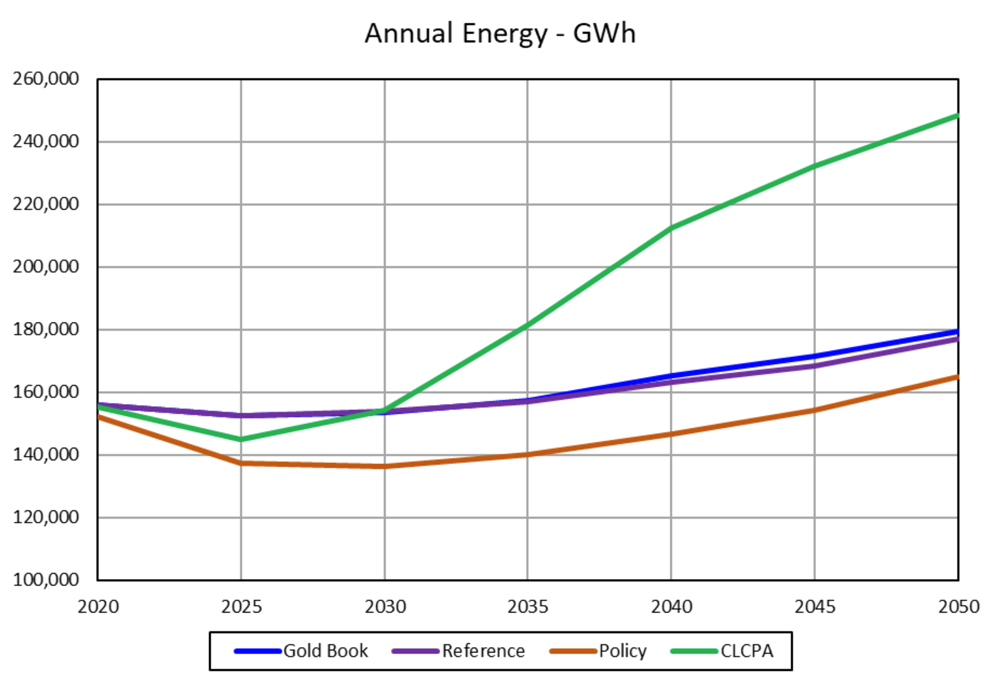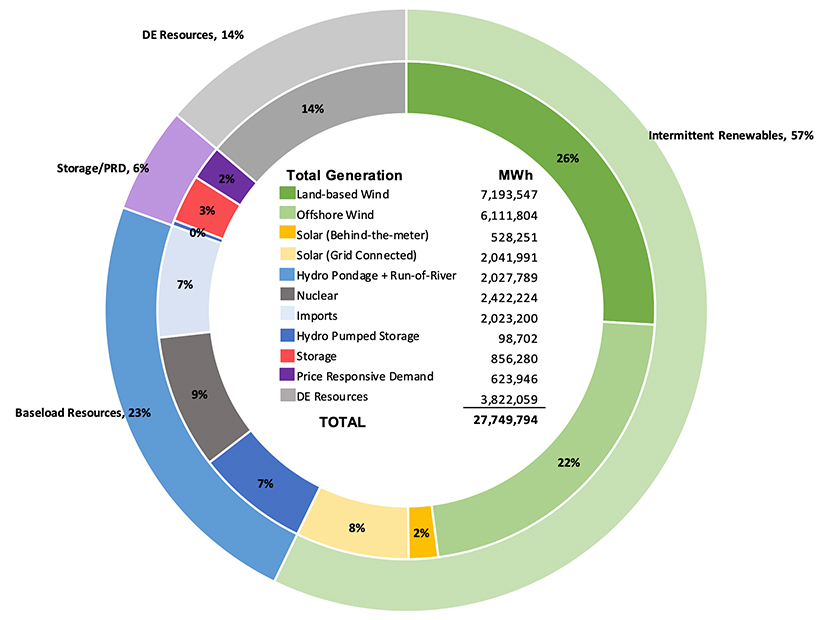NYISO on Wednesday presented stakeholders with a plan to clarify by year-end what increasing amounts of renewable energy mean for the grid over the next decades.
“I want to look at the evolution of load and net load shapes over time, i.e., load net of wind and solar, both behind the meter and in front of the meter, because that is really what the rest of the resources have to respond to,” Nicole Bouchez, principal economist for market design, told the Installed Capacity/Market Issues Working Group.
The multiphase study will first dive into the ISO’s Climate Change Phase I report from 2020 and follow with two studies coming this year that will have additional information.
The first new analysis planned is the Outlook study, followed by the Reliability Needs Assessment (RNA), which could possibly be leveraged for the Grid in Transition effort. (See NYISO Updates Grid in Transition Work and Plan for 2022.)
NYISO will examine “things like the distribution of hourly ramps over time, because in many ways that is what we are anticipating will be changing and what California has seen changing,” Bouchez said. “We’re also going to be looking at periods with low wind and solar and what that implies for these net energy and hourly ramps.”
Several stakeholders said that while some previous studies identified the dispatchable emission-free resource capacity that New York will likely need in the future, there is not much information available on the duration and magnitude of wind and solar lulls.
“It’s not just the energy amount, but how long and how often do we have a one-week lull; how many times do we have a two-day lull; and how many times do we have an hour or two lull — [in order] to understand what kind of pallet of dispatchable emission-free resources would most appropriately apply to the system conditions that we’re likely to see,” said David Clarke of Long Island Power Authority.
Accurate forward weather forecasting will become increasingly important, and the duration and frequency of wind lulls directly impact other resource requirements and other technology requirements as planners start to look out over a 10- or 20-year period, said Chris Wentlent of the Municipal Electric Utilities Association.
“So if we’re seeing a two- or three- or four-day lull, that creates a certain requirement as we think about storage going forward and storage capability,” Wentlent said. “Same thing with zero-carbon resources and the amount that we might need as backup in in those type of events.”
In terms of forward weather forecasting, Bouchez said she didn’t know of any studies specific enough to say at exactly what time of the year lulls will change, but that the second phase of the climate change study looked at historical data, and what scenarios could happen.

NYISO commissioned Analysis Group to perform the Phase II study, which examined the potential impacts on reliability based on the electricity demand projections for 2020-2050 developed in the initial climate change study. Those include the impacts on load and resource availability from more frequent and severe storms and extended heat waves and cold snaps.
“We can definitely go back and re-leverage that information and look to see what we can leverage in terms of wind lulls, especially when we’re looking at periods of multiday potentially low solar,” Bouchez said. “We’ll see what we can pull to make those as realistic as possible, given what is expected in the future.”
The ISO plans to present the Phase I analysis in March and April in terms of market design and then the policy case from the Outlook study in the third quarter, Bouchez said. The RNA study would be presented in the fourth quarter.


